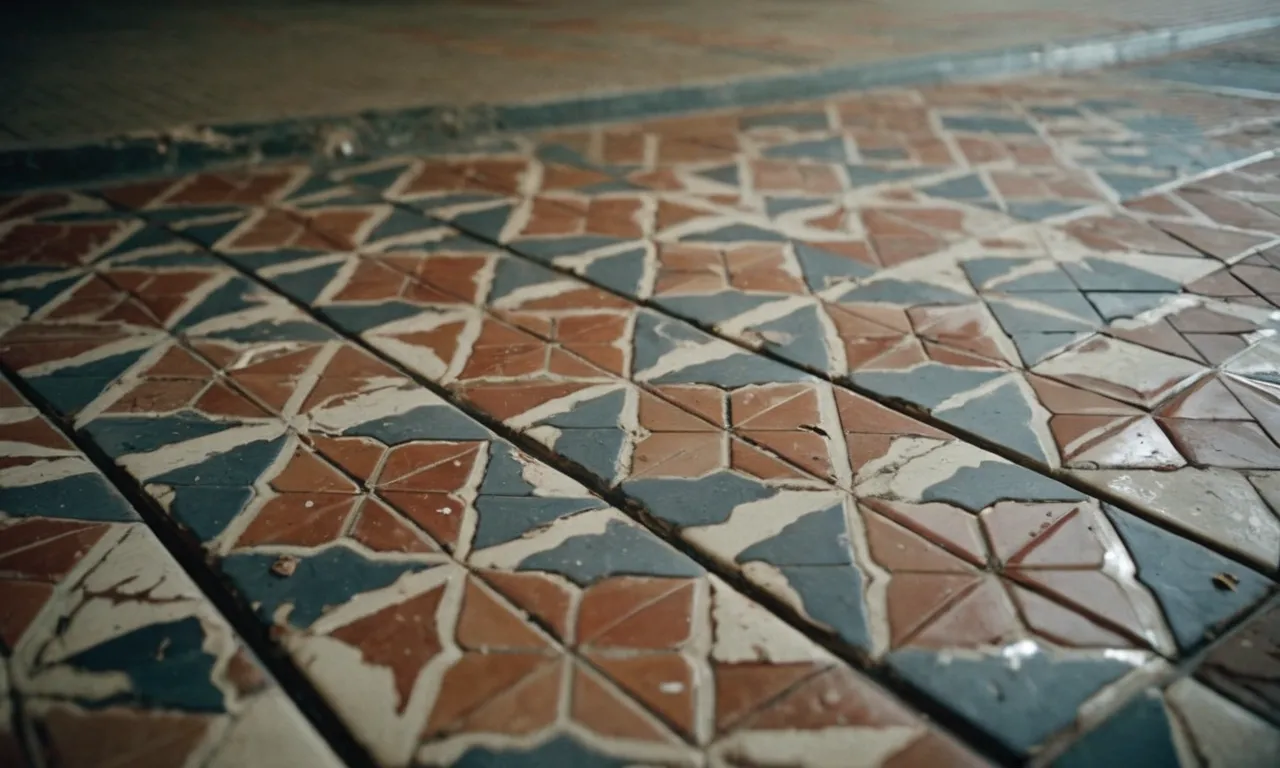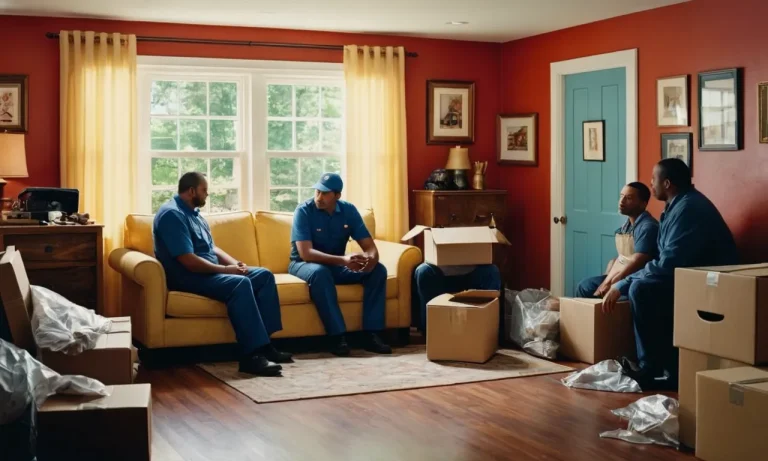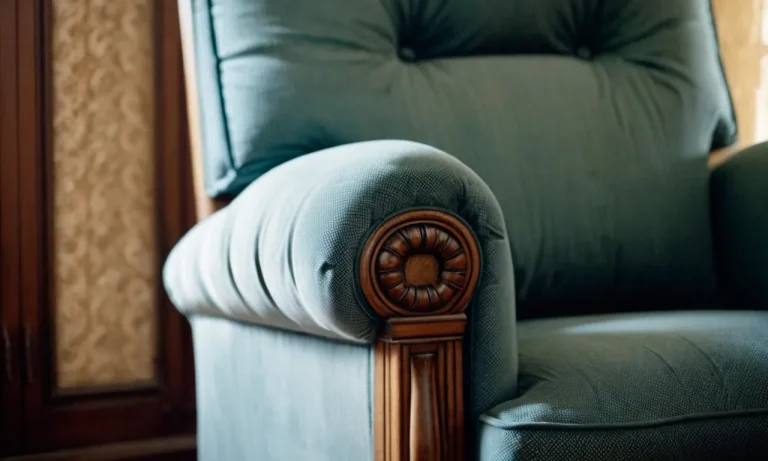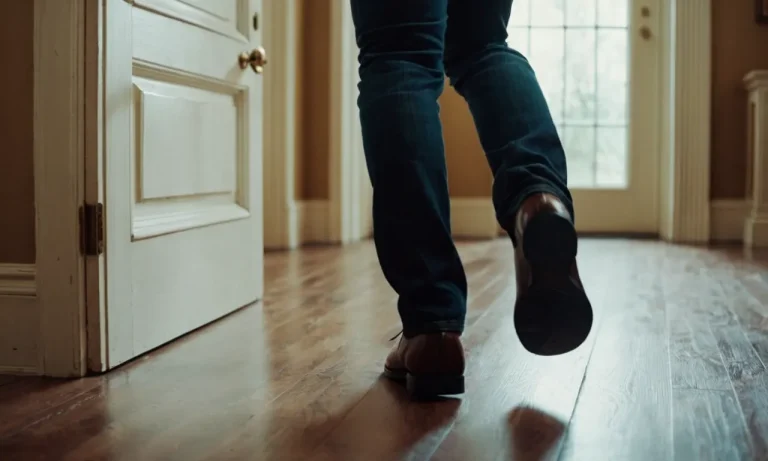When Did They Stop Using Asbestos In Floor Tiles?
Asbestos is a dangerous material that was once commonly used in floor tiles and other construction materials. If you have vintage tile floors in your home, you may be wondering exactly when manufacturers stopped using asbestos in these products.
The quick answer is that asbestos was phased out of floor tiles in the United States by the 1980s, with some companies eliminating its use even earlier in the 1970s.
In this comprehensive guide, we’ll explore the history of asbestos in flooring and look at key dates when regulations and voluntary actions by manufacturers led to its virtual elimination from this product.
Brief History of Asbestos Use in Floor Tiles
Asbestos, a naturally occurring mineral known for its heat resistance and durability, was widely used in the manufacturing of floor tiles throughout the 20th century. Its properties made it an ideal material for various industrial and construction applications.
However, concerns about its health risks emerged in the early 1900s, leading to a gradual decrease in its use.
Asbestos Properties Valued by Manufacturers
Manufacturers valued asbestos for its exceptional heat resistance, insulation properties, and strength. Asbestos fibers were added to floor tile materials to enhance their durability and fire resistance.
The fibers provided added strength, making the tiles less prone to cracking or breaking under heavy loads. Additionally, asbestos offered insulation against heat and noise, making it a popular choice for commercial and residential buildings.
During this period, the harmful effects of asbestos exposure were not yet fully understood, and its use in various products, including floor tiles, was widespread. Manufacturers often marketed asbestos floor tiles as a superior and long-lasting solution for homes and businesses.
Peak Use and Early Concerns Over Health Risks
The peak use of asbestos in floor tiles occurred between the 1920s and 1970s. During this time, millions of homes, schools, and commercial buildings were constructed with asbestos-containing materials, including floor tiles.
However, as early as the 1930s, concerns about the health risks associated with asbestos exposure began to surface.
Medical studies and research revealed a link between asbestos exposure and serious health conditions, such as lung cancer, asbestosis, and mesothelioma. These findings raised alarm among health professionals and led to increased scrutiny of asbestos-containing products, including floor tiles.
By the 1980s, the use of asbestos in floor tiles and other building materials began to decline significantly. Government regulations and increased awareness of the health risks associated with asbestos led to stricter guidelines and asbestos bans in many countries.
Today, the use of asbestos in floor tiles is strictly regulated or banned in most developed countries.
For more information on the history of asbestos use and its health risks, you can visit authoritative websites such as https://www.epa.gov/asbestos and https://www.cdc.gov/niosh/topics/asbestos/default.html.
U.S. Regulations Limiting Asbestos in Flooring
EPA Begins Regulating Asbestos in 1973
In 1973, the Environmental Protection Agency (EPA) took its first steps in regulating the use of asbestos in floor tiles and other construction materials. This was in response to growing concerns about the health risks associated with asbestos exposure.
The EPA set limits on the amount of asbestos that could be present in these products, aiming to protect the public from its harmful effects.
Asbestos, a naturally occurring mineral, was commonly used in the past for its heat resistance and durability. However, it was later discovered that asbestos fibers, when inhaled, could cause serious health issues such as lung cancer, mesothelioma, and asbestosis.
These diseases often have a long latency period, making early detection and prevention crucial.
The EPA’s regulations required manufacturers to label their products if they contained asbestos and to provide warnings about the associated health risks. This allowed consumers to make informed decisions about the materials they were using in their homes or workplaces.
Asbestos Ban and Phase Out Act of 1989
The Asbestos Ban and Phase Out Act of 1989 was a significant milestone in the efforts to eliminate asbestos from various industries, including flooring. This act sought to ban the production, importation, and use of most asbestos-containing products in the United States.
While the ban was ultimately overturned by the courts in 1991, the EPA continued to regulate asbestos under the Toxic Substances Control Act (TSCA). The TSCA placed restrictions on the use of asbestos and required companies to obtain approval from the EPA before manufacturing or importing products containing asbestos.
Since then, the use of asbestos in flooring materials has significantly declined. Many manufacturers have switched to safer alternatives, such as vinyl or ceramic tiles, which do not pose the same health risks as asbestos-containing tiles.
It’s important to note that while asbestos is no longer widely used in flooring, older buildings may still have asbestos-containing tiles. If you suspect that your floor tiles contain asbestos, it’s best to consult with a professional for proper testing and, if necessary, removal.
For more information on asbestos regulations and safety guidelines, you can visit the EPA’s website at https://www.epa.gov/asbestos.
Manufacturers Voluntarily Eliminated Asbestos Before Bans
Johns Manville Stops Using Asbestos in 1974
One of the key players in the asbestos industry, Johns Manville, made a significant move by stopping the use of asbestos in their floor tiles in 1974. This decision came ahead of any government regulations or bans on asbestos.
Johns Manville was one of the largest manufacturers of asbestos-containing products, and their voluntary action set an important precedent for other companies to follow.
With the growing awareness of the health risks associated with asbestos exposure, Johns Manville recognized the need to eliminate this hazardous material from their products. Asbestos has been linked to serious health conditions such as lung cancer and mesothelioma, so the decision to stop using it in floor tiles was a step towards protecting the health and safety of consumers.
The decision made by Johns Manville in 1974 was not only commendable but also played a significant role in shaping the future of the industry. It showed that manufacturers could take proactive steps to prioritize consumer safety, even before regulatory action was taken.
Other Companies Follow Suit in the 1970s and 1980s
Following the lead of Johns Manville, other major companies in the flooring industry also made the decision to eliminate asbestos from their products. Throughout the 1970s and 1980s, a wave of manufacturers voluntarily stopped using asbestos in floor tiles.
This shift in the industry was largely driven by increasing awareness of the health risks associated with asbestos exposure. As more research was conducted and the link between asbestos and serious illnesses became clearer, companies recognized the importance of removing this dangerous substance from their products.
These companies took their responsibility towards consumer safety seriously and made the necessary changes to ensure that their products were asbestos-free. This not only protected the health of consumers but also helped to create a safer working environment for those involved in the manufacturing and installation of floor tiles.
It is important to note that while many manufacturers took action to eliminate asbestos, it took several years for comprehensive bans on the use of asbestos in floor tiles to be put in place. This highlights the importance of proactive measures taken by industry leaders like Johns Manville, as they played a crucial role in driving change and protecting the well-being of consumers.
For more information on the history of asbestos use and its health effects, you can visit the Environmental Protection Agency’s website.
When Was Asbestos Completely Gone from Floor Tiles?
Asbestos, a naturally occurring mineral known for its heat resistance and durability, was widely used in the construction industry for many years, including in floor tiles. However, due to its harmful effects on human health, its use in floor tiles was gradually phased out over time.
Virtual Elimination by Mid 1980s
The use of asbestos in floor tiles began to decline significantly in the 1970s and 1980s, with a virtual elimination by the mid-1980s. This was largely driven by growing awareness of the health risks associated with asbestos exposure, particularly the development of asbestos-related diseases such as mesothelioma and lung cancer.
During this period, manufacturers and regulatory bodies started implementing stricter regulations and guidelines to limit the use of asbestos in building materials, including floor tiles. Many countries, including the United States, Canada, and several European nations, implemented bans or restrictions on the use of asbestos in various industries, including construction.
As a result, new floor tiles produced after the mid-1980s generally do not contain asbestos. However, it’s important to note that some older buildings may still have asbestos-containing floor tiles installed.
Therefore, when renovating or demolishing older structures, proper precautions should be taken to prevent the release of asbestos fibers into the air.
Possible Trace Contamination Still an Issue
While the use of asbestos in floor tiles has been virtually eliminated, there is still a possibility of trace contamination in certain cases. This can occur when asbestos-containing materials were used as subflooring or adhesive during the installation of newer floor coverings.
In such cases, it is crucial to consult with professionals who specialize in asbestos testing and removal to ensure proper handling and disposal of any contaminated materials. They can conduct thorough inspections and take necessary precautions to minimize the risk of exposure to asbestos fibers.
For more information on asbestos and its potential health effects, it is recommended to visit authoritative websites such as the U.S. Environmental Protection Agency or the National Institute for Occupational Safety and Health (NIOSH).
What to Do If You Have Older Tile Floors
If you have older tile floors in your home, it’s important to take certain steps to ensure the safety and well-being of your household. One concern with older tile floors is the potential presence of asbestos, a mineral fiber commonly used in building materials until the late 1970s.
Asbestos is known to cause serious health issues, including lung cancer and mesothelioma, so it’s crucial to know how to handle this potential hazard.
Inspecting for Asbestos
To determine if your tile floors contain asbestos, it’s recommended to hire a professional asbestos inspector. These experts will collect samples from your flooring and send them to a laboratory for testing.
They will also conduct a thorough inspection of your home to identify any other potential asbestos-containing materials. Remember, visual inspection alone cannot confirm the presence of asbestos, so it’s best to rely on professional expertise in this matter.
When inspecting for asbestos, it’s important to note that not all older tile floors contain this hazardous material. However, it’s better to be safe than sorry, especially if your floors were installed before the 1980s.
Asbestos was commonly used in vinyl, linoleum, and asphalt floor tiles, so if your tiles fall into these categories, there is a higher chance of asbestos presence.
Safety Precautions for Asbestos Tiles
If your tile floors are confirmed to contain asbestos, it’s crucial to take the necessary safety precautions to prevent any exposure. Asbestos fibers are hazardous when they become airborne and are inhaled, so it’s important to avoid any activities that may disturb the tiles and release these fibers.
Here are some safety measures to consider:
- Do not sand, scrape, or drill the tiles: These actions can release asbestos fibers into the air, increasing the risk of inhalation.
- Avoid removing the tiles yourself: DIY removal of asbestos tiles is strongly discouraged as it can lead to significant exposure.
- Keep the tiles in good condition: If the tiles are intact and in good condition, they pose a lower risk. Avoid cutting or damaging them to prevent fiber release.
- Limit access to the area: If you have asbestos tiles, consider restricting access to the room to minimize the potential for exposure.
Professional Abatement as an Option
If you’re concerned about the presence of asbestos in your tile floors, you may choose to have them professionally abated. Asbestos abatement involves the safe removal and disposal of asbestos-containing materials by trained professionals.
They follow strict protocols to ensure the safety of both themselves and your household. Hiring professionals for abatement is often the best option to minimize the risk of asbestos exposure and ensure proper handling of the hazardous materials.
It’s important to note that asbestos abatement can be costly, so consider consulting with multiple licensed abatement contractors to get quotes and compare prices. Additionally, it’s essential to hire reputable and certified professionals who have experience in handling asbestos-containing materials.
For more information on asbestos and its potential health risks, you can visit the Environmental Protection Agency (EPA) website. Remember, the safety of your household should always be a top priority when it comes to dealing with older tile floors and potential asbestos-containing materials.
Conclusion
While regulations in the 1970s and 1980s drastically reduced the amount of asbestos in flooring, its use was not fully eliminated overnight. Responsible manufacturers phased it out voluntarily over the course of a decade or more.
By exercising caution with older tile floors, you can protect yourself and your family from potential asbestos exposure.







